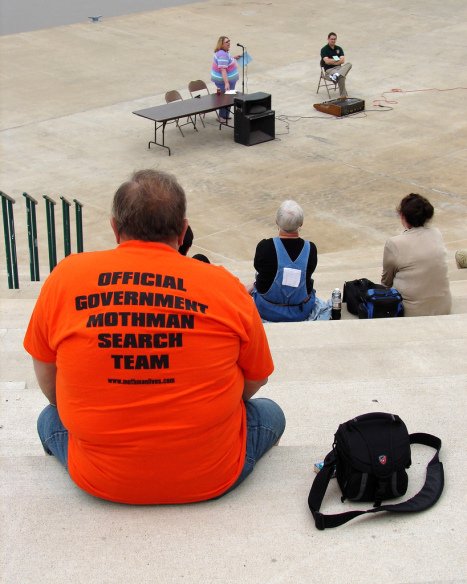The fusion of the natural and supernatural is a prominent feature of tales surrounding the Latin American entity known as the Chupacabras, or “Goat Sucker.” Originating in the 1990s in Puerto Rico, stories of the Chupacabras quickly spread to other countries, including the United States.
The creature earned its moniker due to its habit of leaving farm animals drained of blood, leaving behind only small puncture wounds as evidence. Incidents of farm animal mutilations often coincided with sightings of a peculiar creature—typically described as standing between three and four feet tall, with robust hind legs resembling those of a kangaroo, and possessing dark, glowing red eyes.
Additionally, witnesses reported a strange crest of spiny feathers running down its back. In addition to these peculiar yet seemingly natural traits, some witnesses claimed to have experienced phenomena suggesting involvement beyond that of a flesh-and-blood animal, including reports of the creature emitting beams of light from its eyes that illuminated the darkness like flashlights.
In his book “Chupacabras and Other Mysteries,” Scott Corrales offers the most comprehensive documentation of the early reports from Puerto Rico. It becomes evident that these reports comprise a strange amalgamation of both natural and supernatural elements.
For instance, Corrales details witness testimonies of the creature in flight. While some accounts point to an unusual yet explainable phenomenon, others suggest something more peculiar:
Many who saw the Chupacabras said it has a web of skin connecting its wrist to its knee or ankle, that this web forms a ‘wing,’ like that of a flying squirrel when it raises its arms, and that this structure allows it to glide like a hang glider. But some witnesses insisted that the Chupacabras has a levitation capability that allows it to float through the air like Superman, in level flight without flapping wings and without other means of propulsion. One witness claimed that the extremely rapid movement of small, feather-like appendages along its backbone propelled it like a bumblebee. (4)
Whatever its nature, natural or supernatural, the Chupacabras swiftly became the talk of the town across Puerto Rico. Before long, sightings of the Goat Sucker were reported everywhere. Corrales recounts that in May 1995, a San Juan television station aired a report claiming that a police officer and several witnesses had encountered a gargoyle-like creature while waiting at a Chupacabras bus stop.
Also Read: UFO Religion: Flying Saucer Cults and Crashes
Allegedly, the creature was seen outside a government building, voraciously devouring a large rat. The police officer attempted to strike it with his baton, but the tables quickly turned. The Chupacabras seized the baton in its claws and flew away into the air. Shortly thereafter, the creature was sighted flying over a bustling expressway.
 The peculiar events were only just beginning.
The peculiar events were only just beginning.
One witness observed the creature outside her residence and had the opportunity to closely examine it through a window. She recounted:
It was such a weird creature that I even got down on the floor to see if it had genitals. It had nothing at all – it was ‘plain’ and sealed. I laughed and asked my mother, ‘What the heck is this? Does it defecate through its mouth after it eats?’ It made robot-like movements as if being controlled by someone. (35)
Corrales also describes an encounter between another police officer and the creature:
The creature attacked a Chow dog at policeman Juan Collazo’s home. He heard some noises in the lower part of his home. He went down with his service revolver, and he saw the creature attacking his dog. He immediately fired at it. His car was parked behind the creature. The creature took the bullet’s initial impact, bounced off the wall, took off in a flash, and disappeared. He says it flew . . . The creature had apparently shaved the place on the dog where it would make its incision. (57)
Corrales presents various potential explanations for the creature’s origins and characteristics, suggesting it could be an extraterrestrial, an entity from another dimension, or the product of an unusual genetic experiment.
Regardless of its true identity, Corrales emphasizes the importance of treating it seriously. He asserts, “Real animals owned by real people are being slaughtered by a being that is not native to the Puerto Rican ecosystem” (164).
It didn’t take long for the Chupacabras to extend its reach beyond the confines of the Puerto Rican ecosystem. Shortly after the initial sightings in 1995, the creature seemed to have migrated to other parts of Latin America and even to the United States. Reports of the creature emerged in southern California and Miami, Florida.
Within a few years, it was making headlines in Texas. Wherever it appeared, incidents of dead farm animals with their blood drained from their bodies followed. Similar to the pursuit of Bigfoot, the only hope of unraveling the mystery lay in obtaining an actual physical specimen. At this juncture, Chupacabra hunters received a stroke of luck.
Texas television stations reported multiple instances where residents had stumbled upon the remains of the enigmatic creature. Video footage and photographs depicting the carcasses of peculiar animals were aired on television and swiftly circulated on the internet.
These creatures bore a resemblance to canines but were entirely hairless and possessed robust hind legs. Their teeth were unusually long, protruding from their gums. Farmers recounted instances where chickens and goats had been found completely drained of blood in the preceding months.
Were these the elusive Chupacabras? Veterinarians and experts argued that they were merely coyotes afflicted with severe cases of mange and malnutrition. Skeptics dismissed these claims, as did fervent believers in the Chupacabras phenomenon, pointing out that these creatures, peculiar as they were, bore no resemblance to the beings described by other witnesses.
The original creatures—entities with glowing eyes and the ability to fly—could not possibly be mistaken for mangy coyotes. Even with a physical specimen, the mystery remained far from resolved.
Chupacabras wasn’t the first enigmatic creature to capture imaginations both on land and in the sky. In 1966, Point Pleasant, West Virginia, became the focal point of a series of sightings immortalized by John Keel in his bestselling book, “The Mothman Prophecies” (later adapted into a movie starring Richard Gere).
The sightings commenced in November when an 18-year-old girl named Connie Carpenter reported encountering a massive gray creature while driving past a deserted golf course around 10:30 a.m. The creature resembled a man but was significantly larger, with strikingly large, round, glowing red eyes reminiscent of the Chupacabras.
According to Keel, as Carpenter slowed down for a closer look, the creature unfurled a pair of enormous wings and ascended vertically into the air, resembling more a helicopter than a bird—similar to the movements of the Chupacabras. It then swooped low over her car before she fled in terror. Keel notes that over the winter, more than 100 individuals, dubbed the Mothman, witnessed the creature.
A group of teenagers recounted encountering the entity, describing it as humanoid and standing six or seven feet tall. It had large wings folded across its back, with enormous eyes glowing like car reflectors. The creature was gray in color and walked on two legs. As the teenagers sped past in their car, the Mothman extended its bat-like wings and ascended vertically into the air.
According to the witnesses, the creature pursued their vehicle, keeping pace at 100 miles per hour without flapping its wings. It emitted squeaks resembling those of a large mouse. They narrowly escaped when the creature veered away as they approached town. They noticed that a large dog carcass previously seen on the roadside had vanished, possibly taken by the creature, which, like the Chupacabras, developed a reputation for preying on small animals.
Keel describes one of the victims, a dog, stating, “There was a very large, very neat hole in its side, and the animal’s heart was lying outside the body. It looked as if something chewed it out. There were no other marks on the body” (266). Besides its victims, the Mothman never left behind any physical evidence. This airborne terror didn’t even leave footprints behind.
Image courtesy of billy liar.
Gregory L Reece is an independent Alabama-based writer and scholar with special interests in new religious movements and cult beliefs. His books include UFO Religion, Elvis Religion, Creatures of the Night, and Weird Science, of which this is an extract.
Also Read: Elvis Religion: Pilgrims and Shrines
Books referenced:
Corrales, Scott. (1997) Chupacabras and Other Mysteries. (Murfreesboro, TN, Greenleaf Publications)


